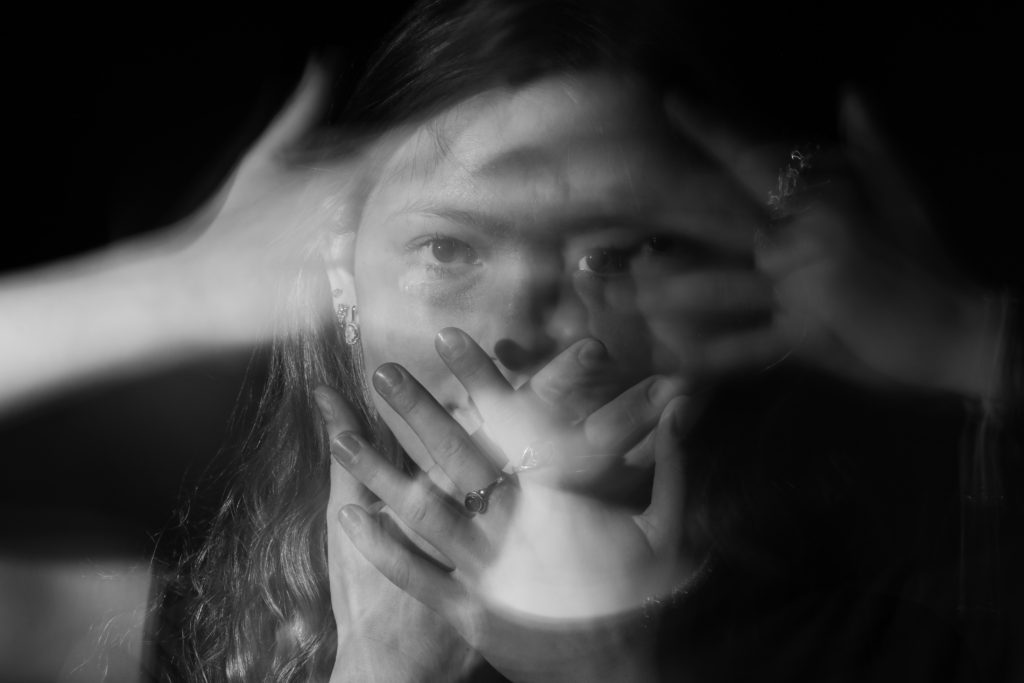





















I have decided to do a photomontage as one of my topics of edits because it like the creativity side of it, i like how i was able to get different photos cut certain parts out and layer them on top of an initial photo to create one abstract photo.
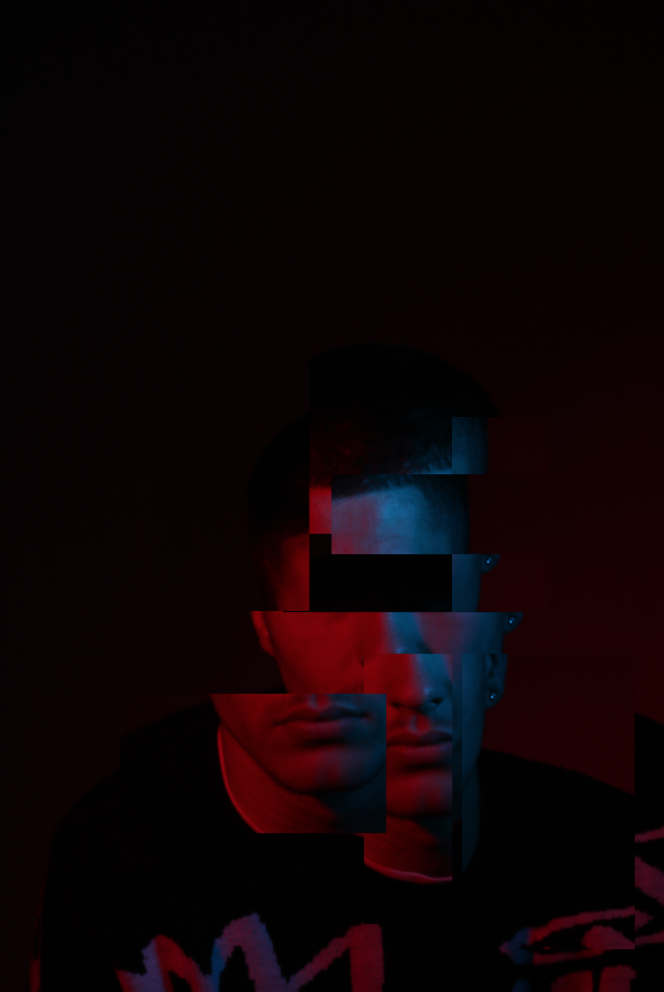
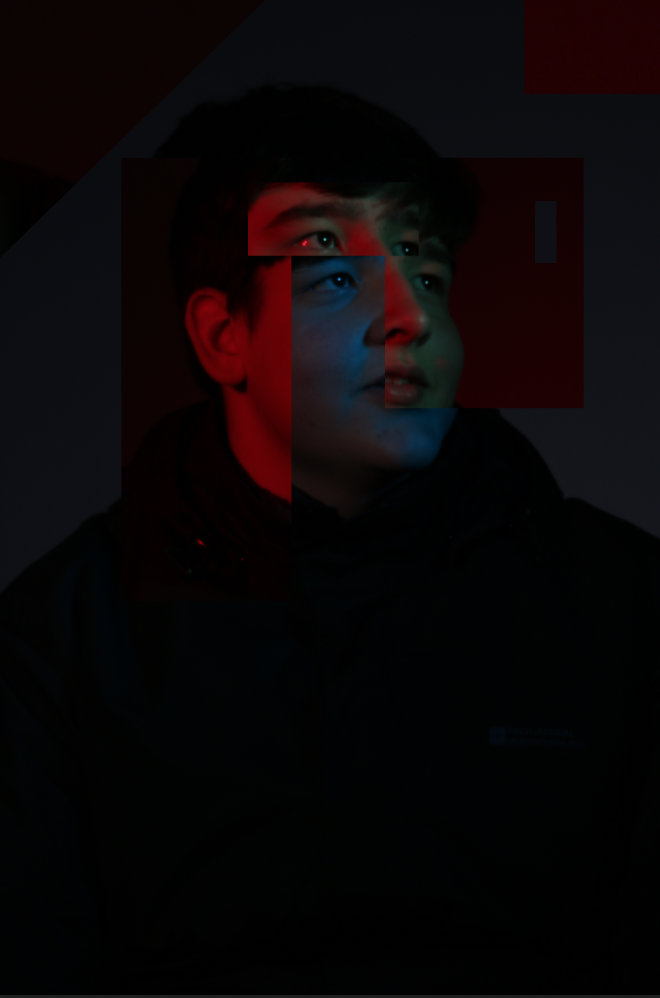

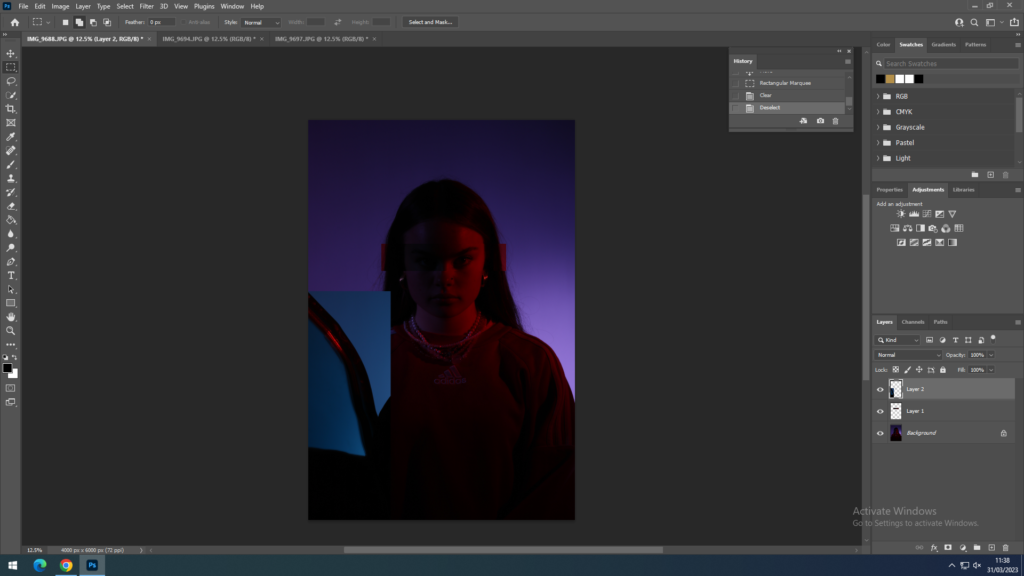







In these montages I mixed two different photoshoots to create a more visible montage, I mixed the colour gels photoshoot and the chiaroscuro lighting shoot. I used two different images from the colour gel photoshoot to create more dimension within the images. Some images I created a basic montage to try and keep the image simple and a somewhat basic montage. In the first two edits I used the same images from the same photoshoot however soon realised it wasn’t as impactful. The first edit I used different coloured images so that you could see the images I cut and pasted however in the second image there is minimal difference within the image. Furthermore in the second edit there is limited depth to the images as there is stationary lighting throughout.
Coming back from studying “the origin of photography” to Henry Mullins, who created over 9,000 portraits of islanders from 1852 to 1873. This is quite impressive as at a time when the population was around 55.000.
His portrait were printed on a carte de visite as a small albumen print, (the first commercial photographic print produced using egg whites to bind the photographic chemicals to the paper) which was a thin paper photograph mounted on a thicker paper card. The size of a carte de visite is 54.0 × 89 mm normally mounted on a card sized 64 × 100 mm. In Mullins case he mounted his carted de visite into an album. Because of the small size and relatively affordable reproducibility carte-de-visite were commonly traded among friends and visitors in the 1860s. Albums for the collection and display of cards became a common fixture in Victorian parlors. The immense popularity of these card photographs led to the publication and collection of photographs of prominent persons.
as well as a full body, in a sitting position photograph, what henry Mullins also did is an addition to the photograph, he presented 4 different headshots in a diamond cameo, which got it’s name because of the layout of the images creating a diamond shape. these headshots were specifically in order of: looking straight at the camera, left side of the face looking to the left, right side of the face, looking Right and a 1/3rd of the face looking away from the camera. the headshots were originally shot in the same format as a large photograph next to them, however what henry did is bleach the rest of the body when developing them, and cut out the unnecessary bleached photograph, so that the headshots are the only ones remaining. he then cut out 4 different slots in a blank card, and the oval cut outs laid on top of the photographs.
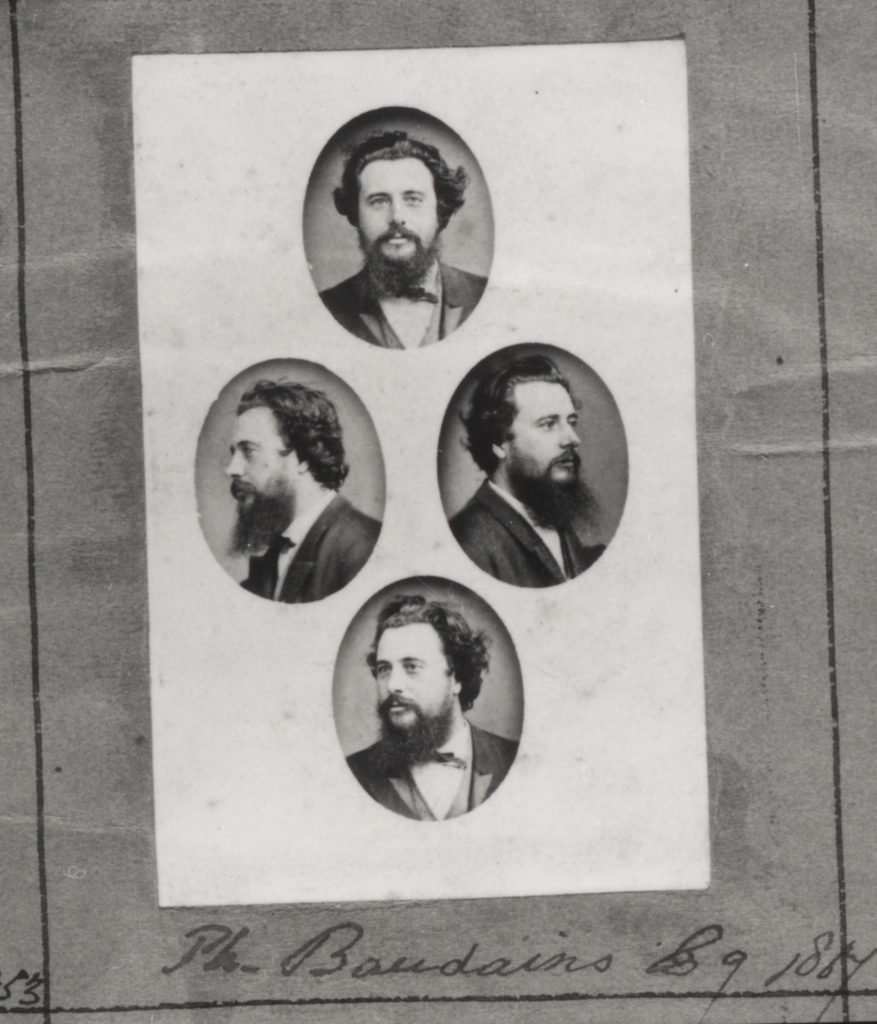

I have arranged a photoshoot to try and re-create diamond cameo technique, however I did it digitally where as originally it would be done by physically bleaching the photograph.

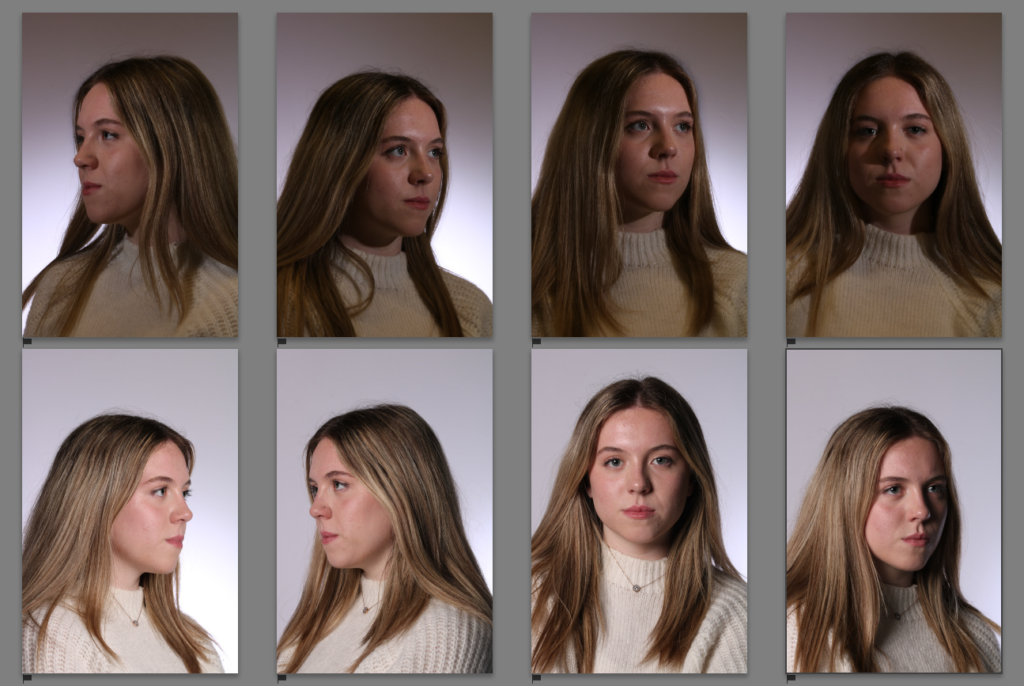
To create a virtual diamond cameo arrangement, I have imported the selected pictures into photoshop. From then by selecting a single photograph, by using elliptical marqee tool I have marked out the area, which meant it was selected in an oval shape.

I needed to convert the background to layer from the selected oval, I had to right click and select inverse + delete.

Pressing CTRL + C an CTRL +V. I have copied and pasted the image onto an opened A4 blank sheet.

Using CTRL + T I was able to shrink the image and arrange it where I wanted it on an A4 Document.

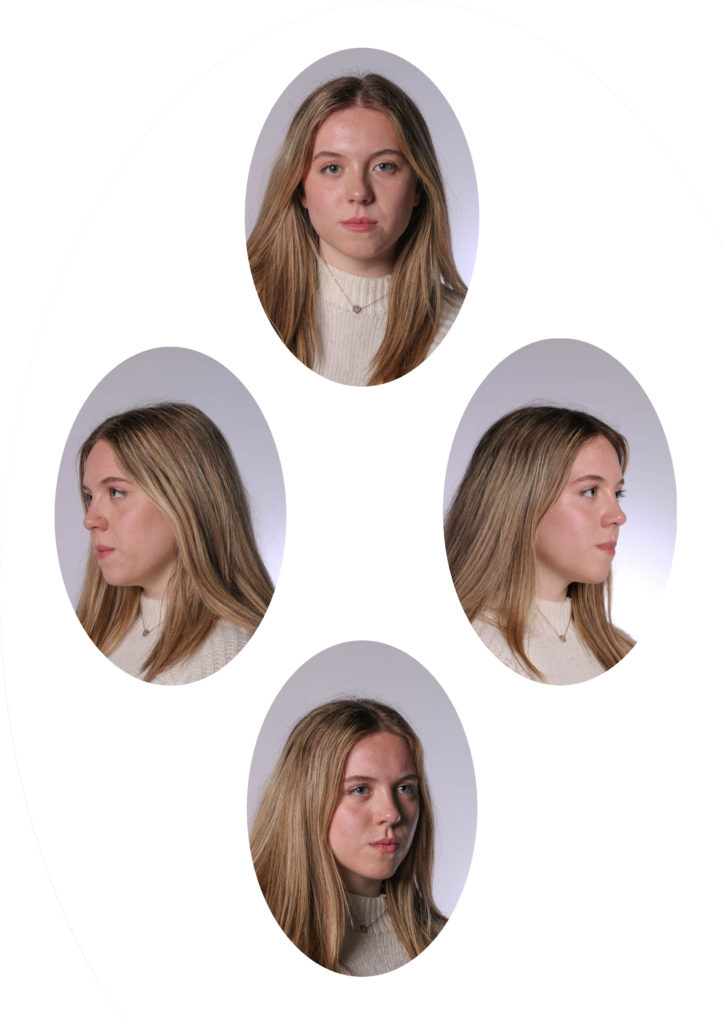
contact sheet photoshoot 1:

contact sheet photoshoot 2:

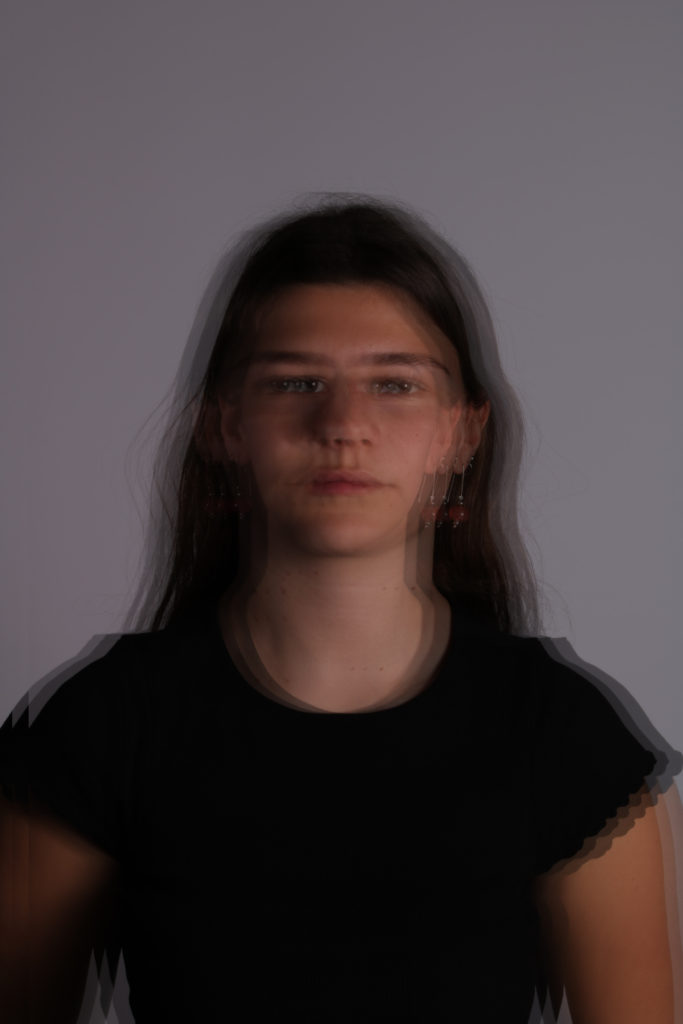
I created this image using photoshop. Originally, it was just a portrait of poppy, but I duplicated the image 3 times and experimented with the opacity to create the effect of a multi exposure/ slow shutter speed image.
This is how:

Photoshoot 1 outcomes:



Photoshoot 2 outcomes:


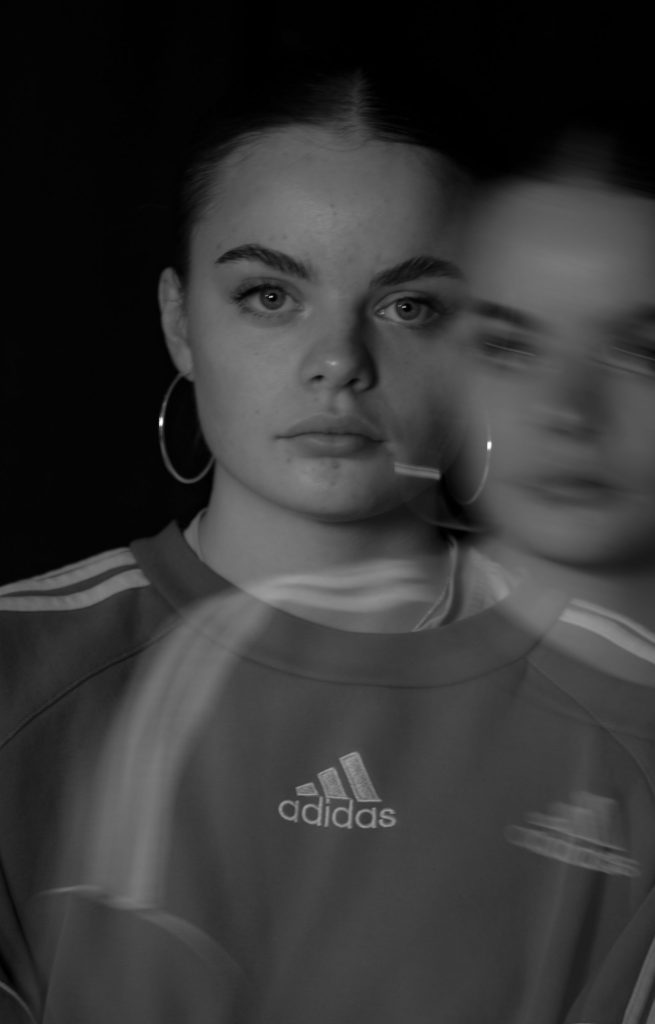


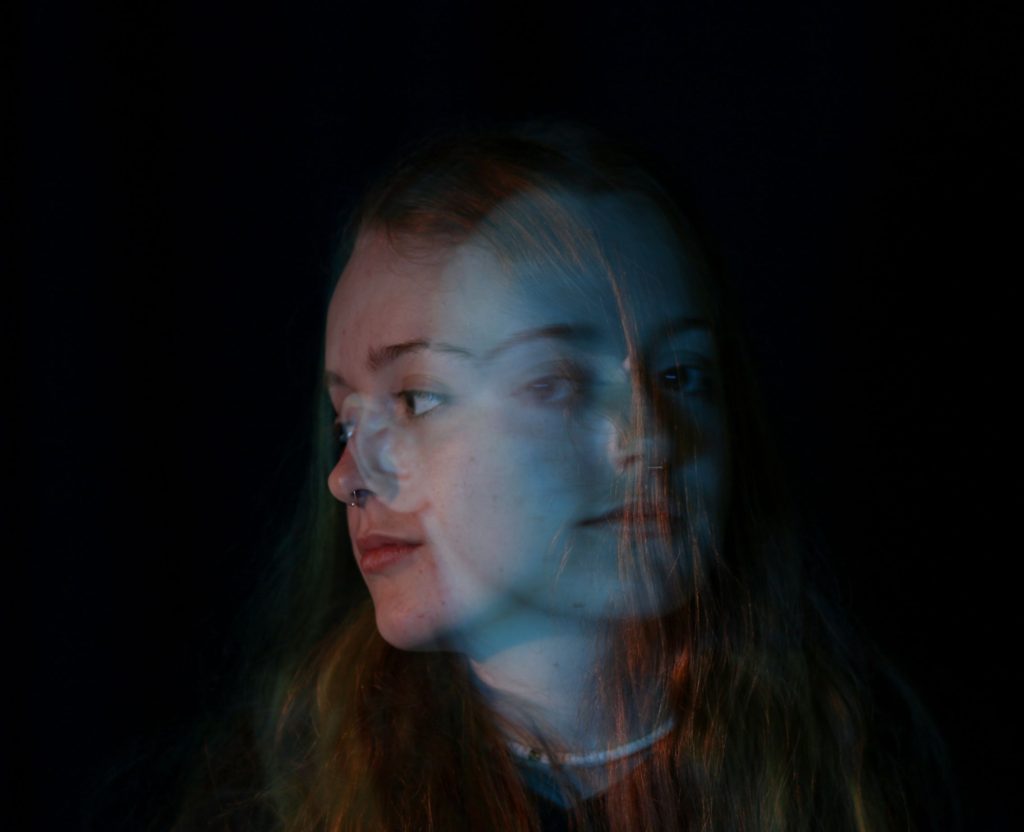


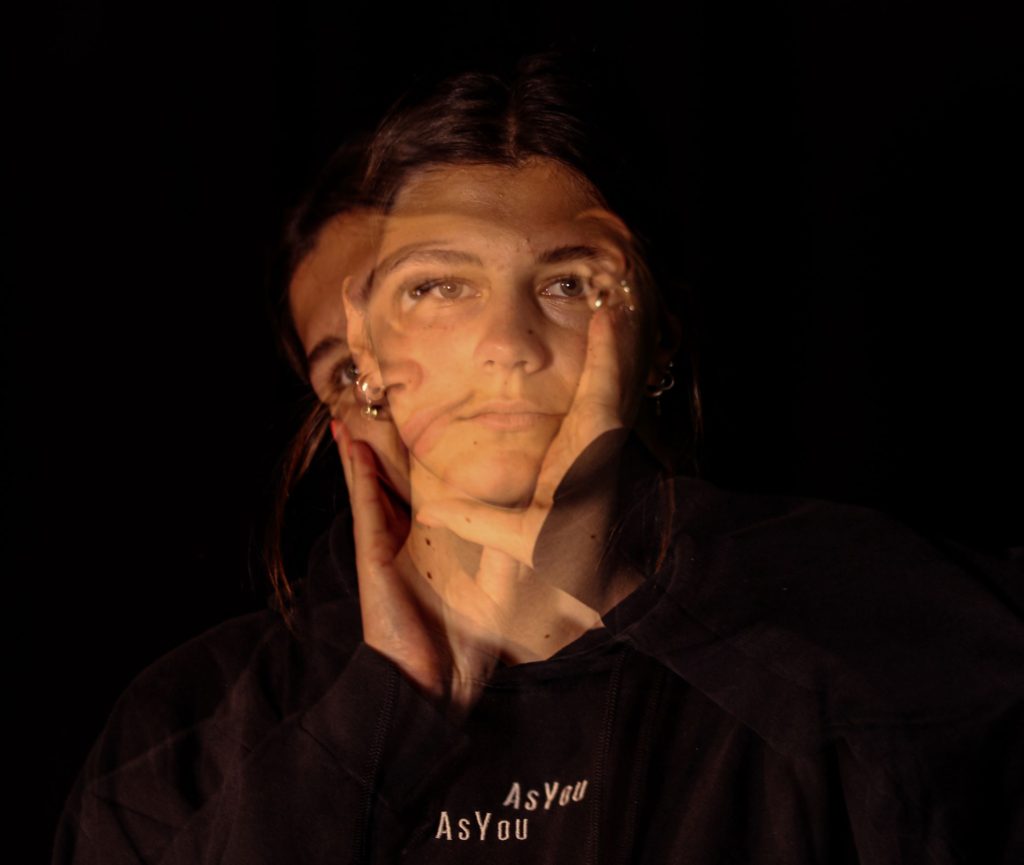


What is the Camera Obscura?

The camera obscura, or pinhole photography, is a term derived from Latin, which means “dark chamber.” It is essentially a box with a small hole on one side, through which light enters, and projects an inverted image of the outside world on the opposite wall of the box.
The discovery of the camera obscura dates back to ancient Greece, where the philosopher Aristotle observed this through a small hole in a tent – however, it was not until the 16th century that the camera obscura was actually used for scientific purposes. For example, Leonardo da Vinci used it as a tool for observing and drawing the world around him, as described in his notebooks.
In the earlier 19th century, the camera obscura was adapted to capture photographic images by using light-sensitive materials to capture the projected image, such as Henry Fox Talbot’s use of paper soaked in a silver nitrate and salt solution to create early, easy-to-replicate prints of his images.
What is Heliography?

Heliography is the process of using natural sunlight to create a photographic image without the use of a camera. It was one of the earliest methods of photography and was invented by French scientist Joseph Nicéphore Niépce in the early 1820s.
To create a heliograph, Niépce would coat a polished metal plate with a light-sensitive material called bitumen of Judea. He would then place an object or a scene in front of the plate and expose it to the sun’s rays for several hours, hardening in the areas exposed to light, while the areas obscured by the object or scene would remain soft and removable with a solvent that washed off the unhardened bitumen, leaving a permanent, positive image on the metal plate.
Although heliography was an essential step in the development of photography, it had several limitations, which is why it was later replaced by more practical photographic processes, such as the daguerreotype and calotype.
What is the Daguerreotype?

The daguerreotype was a photographic process invented by French artist Louis Daguerre in the 1830s. It was the first commercially successful photographic process, revolutionising how people captured and preserved images.
To create a daguerreotype, a polished copper plate was coated with a thin layer of silver, which was then exposed to iodine vapours to make it light-sensitive. The plate was then placed in a camera and exposed to the subject for several seconds. The exposed plate was then developed in a mercury vapour, which caused the silver to amalgamate and form a unique, one-of-a-kind photograph that was highly detailed and had a sharp, mirror-like surface.
However, despite its initial popularity, the daguerreotype had several limitations that eventually led to its decline as a medium of photography. Firstly, the process was time-consuming and expensive. It required a skilled operator and specialized equipment, making it impractical for most people to use. Secondly, daguerreotypes produced a single image that could not be easily duplicated, which limited their commercial appeal. Finally, the chemicals used in the process were toxic, and the resulting images would end up very fragile.
As a result, other photographic processes, such as the wet plate collodion process, were developed in the 1850s, which were faster, more versatile, and produced multiple images, which led to the overall commercial failure of the daguerreotype, although it is still considered to be a key milestone in the development of modern-day photography.
What is the Calotype?

The Calotype is another early photographic process, invented by Henry Fox Talbot in the 1830s. It involved the use of paper negatives coated in silver iodide to create multiple positive prints. When the paper was exposed to light, it was then developed with a solution of gallic acid and silver nitrate, which could be used to produce multiple positive prints by placing the negatives over sheets of light-sensitive paper and exposing them to light.
The ability to make multiple prints was definitely an advantage of the calotype process, which made it a more practical method for creating photographic images, quickly making it very popular among photographers.
The invention of the calotype was a significant step in the development of photography, laying the foundation for the modern photographic industry.
Self-Portraiture

Robert Cornelius, best known for taking what is believed to be the first self-portrait ever produced in 1839, was an American pioneer of photography who used the photographic process of the daguerreotype for his images.
Cornelius discovered self-portraiture when experimenting with his camera in his family’s store in Philadelphia. He took a photograph of himself and after development, it shows Cornelius looking into the camera lens with a somewhat serious expression. It became a significant piece in the development of photography not just because it was the first self-portrait, but because it demonstrated the potential of the medium as a means for self-expression and self-exploration.
What is Pictorialism?

Pictorialism was a movement in photography that emerged in the late 19th Century and aimed to classify photography as a class of fine art. Photographers of this movement sought to create atmospheric, expressive, and visually appealing photographs, employing various techniques such as retouching, combination printing, and manipulation of their negatives to better achieve these effects.
One of the key figures in the Pictorialist movement was Julia Margaret Cameron, a British photographer who quickly became recognised for her poetic and deeply personal approach to portraiture. Her portraits were characterised by their soft focus, dramatic lighting, and emotional intensity, often using family members and friends as her subjects.
Cameron’s photos were often heavily praised for their sensitivity and beauty but were also criticised for their lack of attention to detail. Despite this, she continued to create these types of images over her career, which spanned just around a decade.
Carte-de-Visit

The Carte-de-Visite was a type of small photograph that was heavily popularised in the mid-19th Century. Invented by French photographer André-Adolphe-Eugène Disdéri in 1854, it was created for the purpose of making photography more accessible to the general public. He did this by printing multiple images on a singular plate and then cutting them apart into their own individual photographs, which allowed him to produce photographs quicker, and at a lower cost than before. The resulting images were small enough to fit in a wallet or pocket (around 2.5 x 4 inches) and were often used to commemorate important events such as weddings at the height of their popularity.
They were primarily popularised by American photographer Henry Mullins, one of the first photographers to commercially adopt the format, producing Carte-de-Visites of important politicians, famous actors and various other public figures, which he then sold from his studio via mail order. He marketed this nationwide with agents, newspaper and magazine advertisements, and travelling salesmen, even producing a special display album for storage of Carte-de-Visites.
Mullins’ commercial success with the Carte-de-Visite helped turn photography into a widely-used medium, with millions of people collecting and exchanging them. As new photographic processes such as the cabinet card and larger photographic print became more popularised, however, the popularity of the Carte-de-Visite started to decline throughout the 1880s, becoming essentially elite in the years that passed. Despite this, it still remains an integral part of photographic history, both as a format and cultural phenomenon.


What Is It?
Diamond Cameo. The PATENT DIAMOND CAMEO. The Patent Diamond Cameo photograph was registered by F.R. Window of London in 1864. Four small oval portraits (1″ x 3/4“) were placed on a carte de visite in the shape of a diamond, each portrait being of the same person photographed in a different position. A special camera made by Dallmeyer was used in which the one glass negative was moved to a new position in the back of camera after each portrait had been taken, and when the paper print had been pasted on the card a special press was used to punch the four portraits up into a convex cameo shape.
t is unlikely the process became very popular with Adelaide’s photographers, as the failure of just one of the four portraits through movement, poor expression or incorrect exposure meant that the plate had to be rejected and another four portraits made on a new plate. To obtain a carte de visite which had a pleasing overall effect would have involved careful advance planning of the four positions to be taken, as it was only after the negative was developed that the photographer could see if an acceptable negative had been produced.
My Response

The Patent Diamond Cameo photograph was registered by F.R. Window of London in 1864. Four small oval portraits were placed on a carte de visite in the shape of a diamond, each portrait being of the same person photographed in a different position.




contact sheet:




Final outcomes:


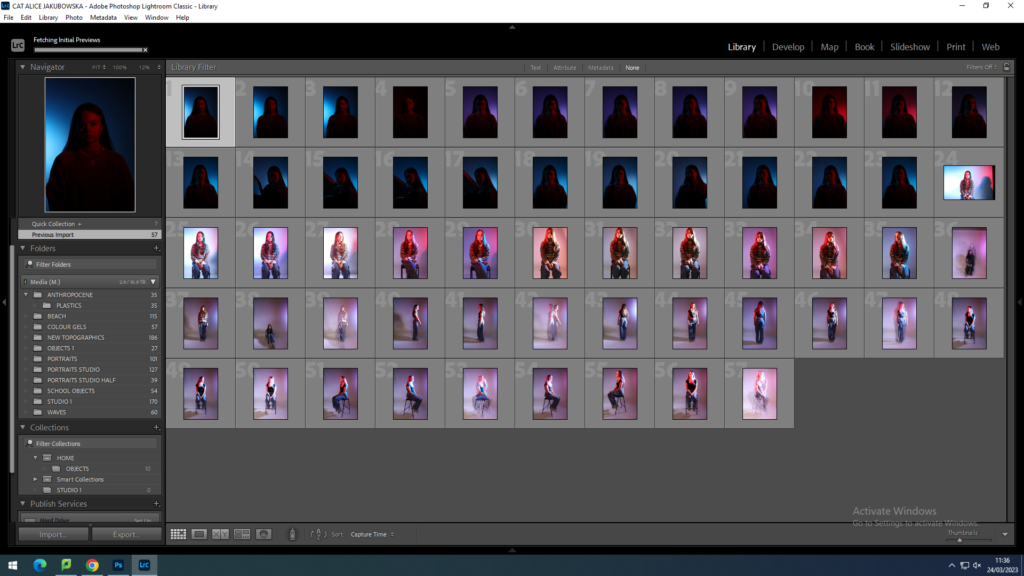
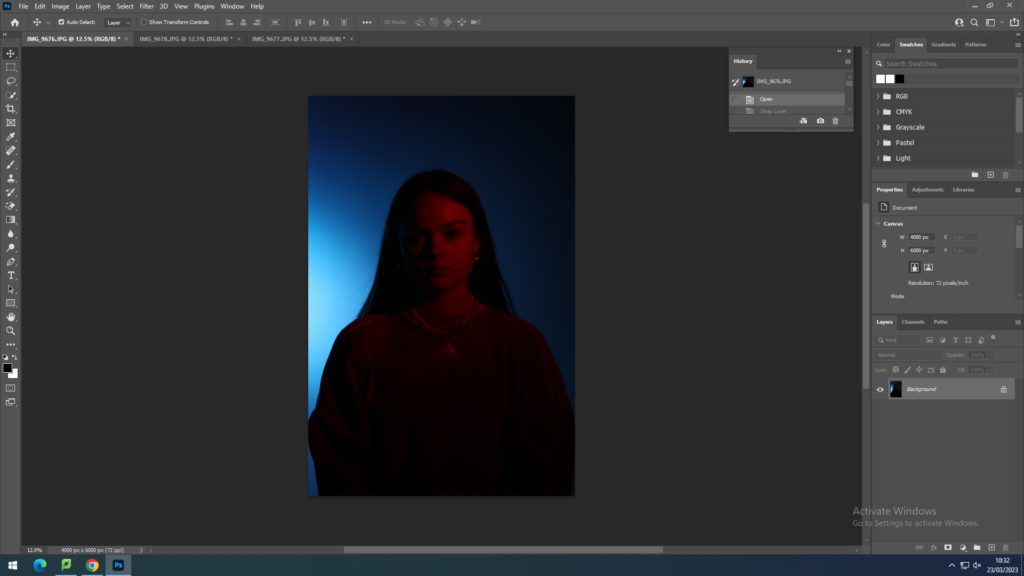


The images used in this edit have been taken as singular shots, which means each image is an individual. We used colour gels to create the different colours within the image in order to create the multi coloured background. I picked images within the same photoshoot to keep a corresponding mood within the triple exposure edit, these images were alike yet shared differences therefore worked within the edit. I made one of the pictures and slowly while decreasing the opacity to create a shadow within the triple exposure.

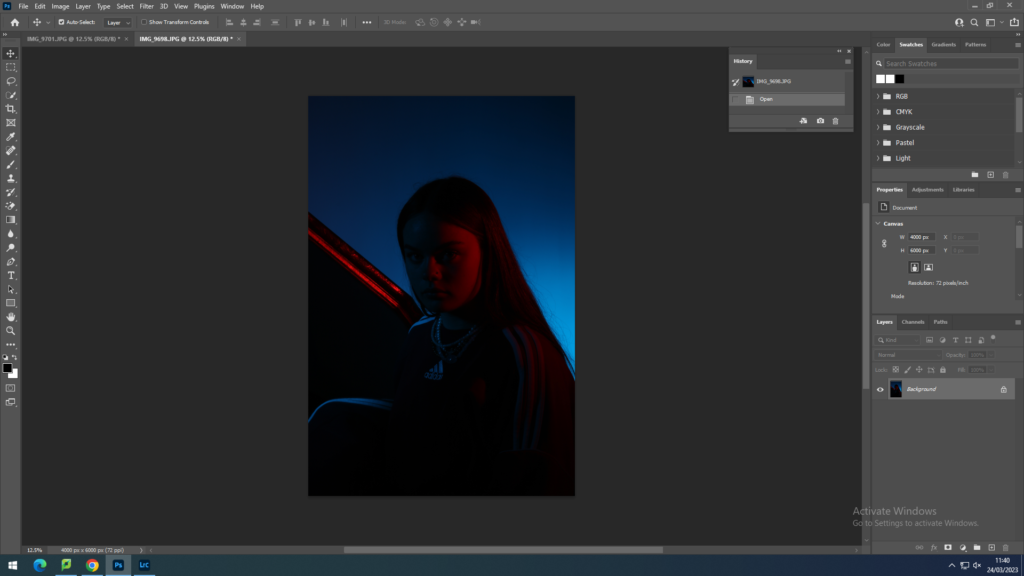
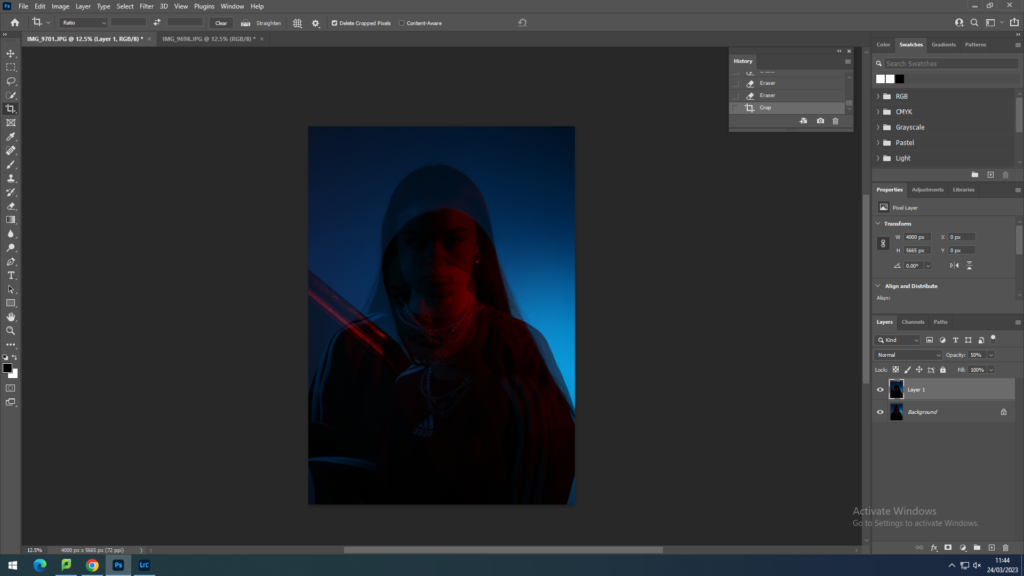
Similarly to the other edit colour gels were used, these images were still taken while using the blue and red lighting. While photography Phoebe she held a mirror in order to try and reflect her face, in order to get to sides of her face within the portrait. That image was taken at an angle therefore I used an image with a direct mode of address, this is to create dimension in the image.




These images were taken in a red light, which connotes danger, sacrifice, courage however has also had recent connotations of heat, love and passion. Within my images taken of Phoebe my images radiate danger and anger, this is to do with her posture as well as the stance of her body and the direct eye contact seen in this images. For this double exposure I chose images that are fairly similar with a slight difference of the angle of her face, this is to create a simple yet affective double exposure without removing the power image it is itself.


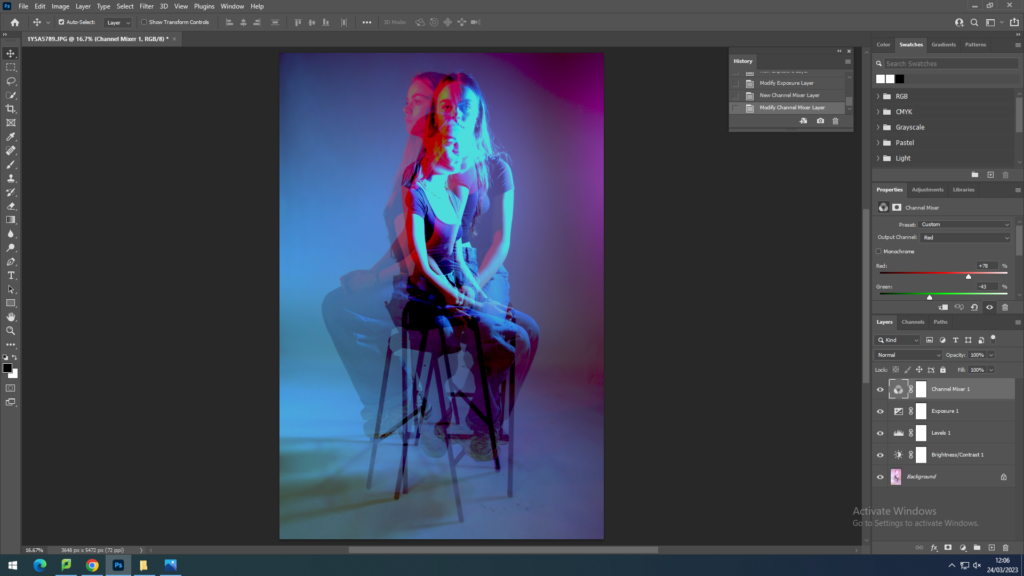

This image was taken on the camera itself using the double exposure setting, this therefore meant I didn’t have to manually have to create a double exposure on photoshop. However I did adjust the exposure and hues in the image to reduce the amount of light which affected the images by creating a white undertone and lacking colour. In order to create the vivid colours seen in the last image I increased the hues and saturation.

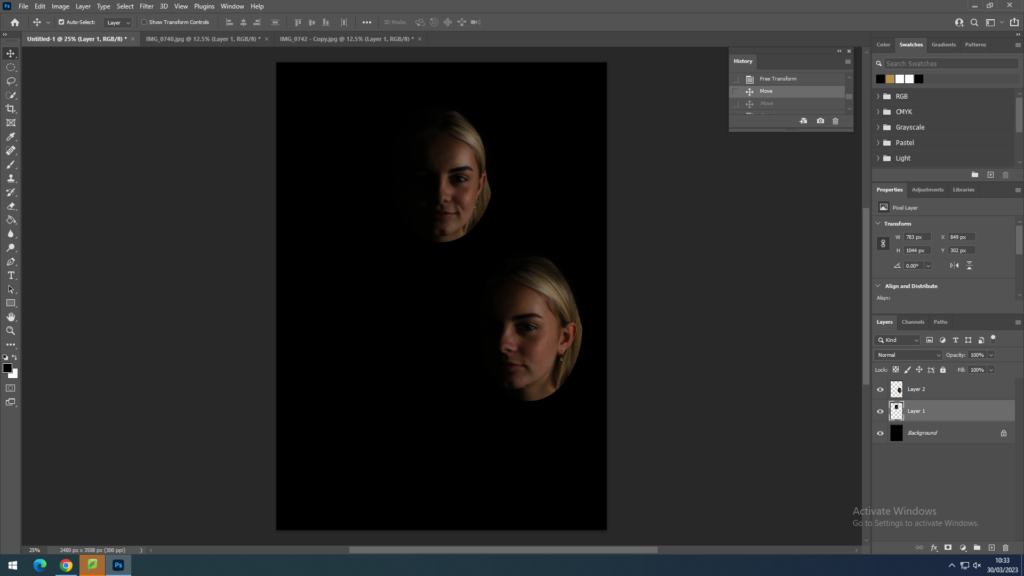

The images used in this diamond cameo are used with chiaroscuro lighting, that is where the light creates a contrast of dark and light on your face. These images seemed to work with the diamond cameo as Anna’s face was tilted on the side creating that circle and affect of a flowy circle. However to further improve this cameo I would do another photoshoot using this lighting and take photos in more angles, as I had to photoshop the different angles on her face.




In this diamond cameo I tried creating a older, rusty look. I got a picture of old brown paper from the internet to create a more vintage look. When editing the pictures of Wiktoria I made them black and white due to most of the first photography created they tended to be black and white. I used the posterize tool to create the grainy background in the back of the portraits. To further experiment I made the whole image black and white including the background to create more of a neutral plain image, also using the posterize tool to blend the background a portraits together while also trying to additionally old age period mood.


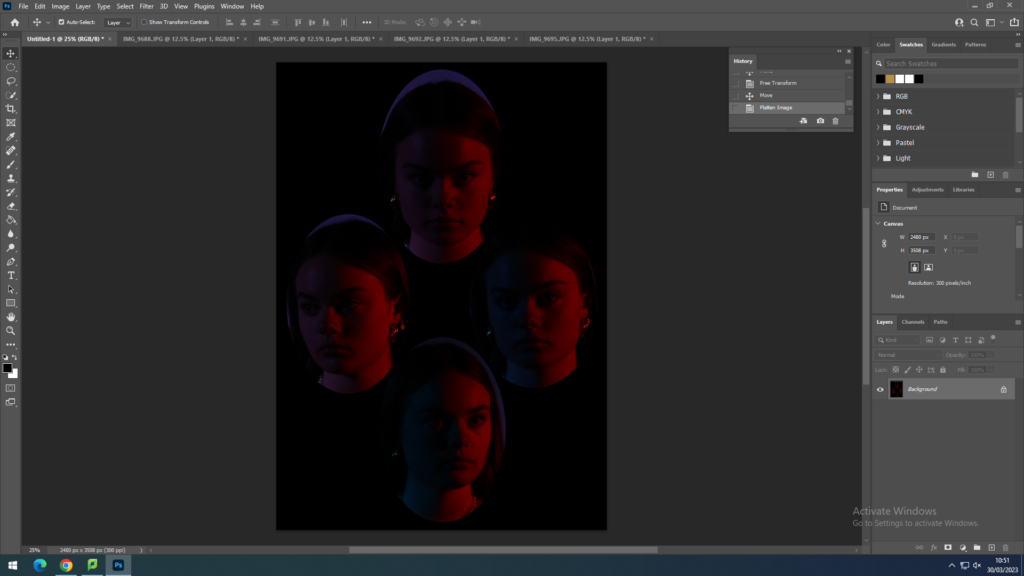
In this cameo I used images from the colour gel photoshoot, I used photos from the same colour to try and be able to create an association within the cameos. I put these images on a dark background as it visually looks more aesthetically pleasing as the portraitures are already slightly darker and a white background would wash out the images and create the main focus on the background instead of the images. The images show different angles of Phoebes face which fits with the diamond structure, as it goes round in a circle, which slightly gives a connotation of a clock how time passes and how a face can change even if it is just the angle.